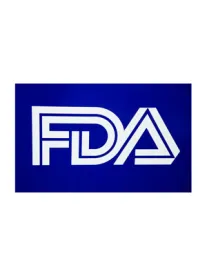On June 17, 2014, the U.S. Food and Drug Administration (FDA or the Agency) issued two draft guidance documents, providing recommendations for two types of communication over internet and social media platforms. The first document, Internet/Social Media Platforms with Character Space Limitations—Presenting Risk and Benefit Information for Prescription Drugs and Medical Devices (Space Limitation Guidance), addresses advertising and promotional communications concerning prescription drugs (human and animal) and medical devices over electronic or digital platforms that limit the number of character spaces that may be used in the communication, such as Twitter and sponsored search engine results. The other draft guidance, Internet/Social Media Platforms: Correcting Independent Third-Party Misinformation About Prescription Drugs and Medical Devices (Misinformation Correction Guidance), discusses how manufacturers and other entities may correct certain misinformation about their products posted by independent third parties over the internet or social media without triggering otherwise applicable FDA advertising or labeling requirements. Although these guidance documents, if finalized, may provide some long-awaited clarity on the FDA’s approach to reviewing these internet/social media communications, prescription drug and medical device firms should proceed with caution. Both draft guidance documents propose detailed and extensive conditions on the use of these media platforms that warrant careful consideration and implementation by manufacturers that intend to make such communications on internet or social media platforms.
Draft Guidance Regarding Internet / Social Media Platforms with Character Space Limitations
The Space Limitation Guidance outlines the informational content that manufacturers, packers and distributors of prescription drugs and medical devices should include in promotional communications over platforms that impose character space limitations, such as microblog messaging on Twitter, and sponsored links on search engines such as Google or Yahoo. The FDA advises that, despite the character limitations of these platforms, manufacturers seeking to make product benefit claims over such forums must include an “accurate and balanced presentation of both the risks and benefits.” In this regard, the FDA notes that character-space-limited platforms may not enable the meaningful presentation of balanced risk and benefit information for certain products, such as those with “complex indications or extensive serious risks.” If a firm uses a space-limiting platform to make a benefit claim, in addition to providing risk information within the space-limited platform, it should also provide a link or other mechanism for direct access to a broader discussion of risks.
The FDA explicitly excluded reminder promotions from the draft guidance, which consist of “labeling or advertising that calls attention to the name of a drug or device but does not include indications, dosage recommendations, or other information,” insofar as such reminder promotions are exempt from FDA requirements regarding the disclosure of risk information.
Communication of Benefit Information
First, the draft guidance clarifies that benefit information communicated over internet and social media platforms with character space limitations should be accurate and nonmisleading and reveal relevant, material facts about the drug or device at issue. For prescription drugs, this should include information from the “Indication and Usage” portion of the drug’s Highlights of Prescribing Information, “although the firm is generally not required to use the precise wording found there.” For medical devices, material facts may include information conveyed on the labeling for the product [in the case of a premarket approval application (PMA) for a class III medical device] or use information based upon the cleared intended use in the case of a 510(k) medical device.
The FDA advises that the omission of a material fact could be considered misleading. For example, a firm that promotes a drug as preventing “memory loss” in a tweet or ad may run afoul of the recommendations in the guidance if the drug was indicated only for mild-to-moderate memory loss. Similarly, the FDA may consider a tweet or ad that promotes medication for “severe headache” to be misleading if the drug was indicated only for patients with severe headache who had suffered traumatic brain injury. The benefit information should also be communicated in a way that leaves sufficient room for risk information. In the examples offered by the FDA, the benefit information was limited to the first 40–50 characters of the communication.
Communication of Risk Information
With regard to the presentation of risk information in character-space-limited communications, the FDA recommends that manufacturers:
-
Present risk information with benefit information within the same character-space-limited communication;
-
At a minimum, include the “most serious risks” associated with the product in the character-space-limited communication;
-
Include a mechanism, such as a hyperlink, within the communication to allow direct access to a more complete discussion of risk information about the product; and
-
Ensure that risk information is comparable in prominence to the benefit information within each individual character-space-limited communication, taking into consideration any formatting capabilities available on the specific internet/social media platform
The FDA states that the “most serious risks” for prescription drugs would generally include all risk concepts from a boxed warning, all risks known to be fatal or life-threatening and all contraindications. For medical devices, the “most serious risks” would include particular risks associated with particular identifiable uses or populations. The hyperlink to more extensive risk information should direct consumers to a webpage or PDF that is “devoted exclusively to the communication of risk information about the product.” A link to a firm’s homepage would not satisfy this recommendation, even if the home page included risk information. The FDA’s examples indicate that the hyperlink may consist of a word or phrase describing the content of the landing page, such as “Risk information.” Additionally, the hyperlink itself may not be “promotional in content or tone,” meaning it cannot contain claims about the drug or device’s benefits (e.g., “bestcancercuredrug.com”). Firms may also use URL shortening services to provide a link with fewer characters, but the FDA “recommends that the URL or web address itself denote to the user that the landing page consists of risk information (e.g., www.product.com/risk).”
If the platform allows for the use of different formatting, the FDA recommends that manufacturers use such formatting to highlight significant risk information with bolded or underlined text. Additionally, hyperlinks to risk information should be included in the same format as any links to benefit information.
Communication of Established Name, Specific Dosage Form, Quantitative Ingredients and Other Information
Finally, the FDA provides recommendations for how firms may address additional legal requirements affecting the promotion of prescription drugs and medical devices. First, the FDA notes that the Food, Drug and Cosmetic Act (FDCA) requires the established (or generic) name of the prescription drug or restricted device to accompany any brand or trade name in advertising for the drug or device. To meet this requirement, manufacturers that seek to use character-space-limited platforms should include the established name of the product “directly to the right of or directly below, the brand name.” The FDA indicates that it would be reasonable to use common abbreviations, punctuation marks and scientific abbreviations to help address character limitations. In the FDA’s example, a drug with the brand name “NoFocus” and the established name “rememberine hydrochloride” would appear in the character-limited-communication as “NoFocus (rememberine HCl)”.
The draft guidance also notes that FDA drug regulations require any advertisement to display the name of at least one specific dosage form, as well as quantitative ingredients. The FDA proposes to allow firms to exclude this information in the character-space-limited communication itself, but recommends that each landing page associated with a hyperlink appearing in the character-space-limited communication “prominently display at least one dosage form and the quantitative ingredient information in direct conjunction with the brand and established names.”
Implications and Potentially Prohibitive Effect for Certain Drugs and Devices for these Platforms
The FDA emphasizes that a product benefit claim made within a communication over an internet or social media platform should incorporate risk information, regardless of any character space constraints that may be imposed for the chosen mode of communication. In effect, in the event a manufacturer finds that sufficient benefit and risk information and other information required to be included within a communication “cannot all be communicated within the same character-space-limited communication, then the firm should reconsider using that platform for the intended promotional message.” The Agency recommends that firms “first carefully consider the complexity of the indication and risk profiles for each of their products to determine whether a character-space-limited platform is a viable promotional tool for a particular product” before developing a communication for use on these platforms. If the FDA finalizes these draft recommendations, firms would need to assess, in particular, their products’ “most serious risks” and decide whether such risks could be adequately communicated through these character-space-limited platforms.
Draft Guidance Regarding Correcting Independent, Third-Party Misinformation Over Internet / Social Media Platforms
The Misinformation Correction Guidance is intended to address how manufacturers, packers and distributors of prescription human and animal drugs and medical devices may respond to misinformation about their own products when the information is created or disseminated by independent third parties on the internet or social media. Importantly, the FDA indicates that the information that firms provide to correct such misinformation would not be required to comply with otherwise potentially applicable FDA labeling and advertising requirements if the misinformation is of a type that falls within the scope of the draft guidance and the firm appropriately responds to the misinformation as specified in the draft guidance. Notably, the FDA also indicates that firms should carefully determine the scope of misinformation they choose to correct to ensure that their corrections are not limited to negative communications about their products.
Scope of Misinformation Correction Guidance
The draft guidance defines “misinformation” as “positive or negative incorrect representations or implications about a firm’s product created or disseminated by independent third parties who are not under the firm’s control or influence and that is not produced by, or on behalf, or prompted by the firm in any particular [way]”. The draft guidance would apply to misinformation for which the firm is not responsible and that is communicated on the firm’s own internet forum, an independent third-party website or through social media.
According to the FDA, the draft guidance “does not apply when a firm is responsible for the product communication that contains misinformation.” If a firm collaborates, or exerts control or influence on content, the FDA will consider the firm responsible for the communication for purposes of the draft guidance. For example, if a firm moderates a discussion board or chat room on its website by removing or editing negative postings about a product while promoting positive postings, it would be deemed responsible for the resulting content on the discussion board or chat room, and such content would not be considered generated by an independent third party. Accordingly, the resulting content provided by the firm may be subject to any applicable FDA regulatory requirements concerning labeling or advertising.
Internet and social media forums, message boards and chat rooms that are offered by a firm for the submission of “user-generated content” (UGC) related to a product—i.e., information created by a third party—may fall within the scope of the draft guidance. The FDA clarifies, however, that a firm should include “an overarching clear and conspicuous statement that the firm did not create or control the UGC” and did not “solicit or influence” the UGC.
Appropriate Correction of Misinformation
If a firm chooses to correct misinformation covered by the draft guidance, the FDA recommends that the communication should:
-
Be relevant and responsive to the misinformation;
-
Be limited and tailored to the misinformation (such as limiting the corrective information to the specific indication that is addressed by the misinformation);
-
Be nonpromotional in nature, tone and presentation;
-
Be accurate;
-
Be consistent with the FDA-required labeling for the product;
-
Be supported by sufficient evidence, including substantial evidence, when appropriate, for prescription drugs;
-
Either be posted in conjunction with the misinformation in the same area or forum (if posted directly to the forum by the firm), or should reference the misinformation and be intended to be posted in conjunction with the misinformation (if provided to the forum operator or author);
-
Disclose that the person providing the corrective information is affiliated with the firm that manufactures, packs or distributes the product; and
-
Include or provide in a readily accessible format the FDA-required labeling (such as by providing a direct link to a website or PDF file). The FDA notes that the URL or link text may not be promotional in content or tone in order to fall within the scope of the draft guidance
Correcting a Clearly Defined Portion of the Forum
The FDA acknowledges that firms cannot feasibly monitor all of the vast quantities of communications available on the internet and social media regarding their products, and may even have difficulty monitoring individual forums. Thus, if a firm corrects one or more instances of misinformation, the FDA does not expect the firm to correct each piece of information in the entire forum. Importantly, however, the Agency emphasizes that firms may not correct only negative misinformation that exists regarding their products and leave uncorrected positive misinformation appearing within the same portion of a forum that the firm indicated it is correcting. Specifically, the FDA states that firms “should clearly identify the misinformation it is correcting, define the portion of the forum it is correcting, and should correct all the information that appears in that clearly defined portion.” Firms should provide enough information about the scope of the correction so that readers would not assume the firm had reviewed information across the entire forum for accuracy.
In particular, the FDA recommends that firms exercise caution when making multiple corrections within a single forum and clearly define the scope of their review and correct all misinformation, positive or negative, that falls within the defined scope. For example, the FDA indicates that it would not consider a firm’s corrections to negative statements to be within the scope of the draft guidance (such that they may be subject to FDA advertising or labeling requirements) if they are found adjacent to an uncorrected statement that overstates the benefits of its product. In this regard, the FDA further notes that a public statement in the forum that the firm is electing to correct only certain pieces of misinformation would not be a sufficient explanation for avoiding the correction of nearby nonfavorable information.
Approaches to Correcting Misinformation
The draft guidance offers several recommendations for how manufacturers may correct misinformation. They may:
-
Correct information directly in the forum;
-
Provide the corrective information to the author for the author to incorporate;
-
Request that the author remove the misinformation or allow comments to be posted; or
-
Request that the site administrator remove the misinformation or allow comments to be posted
As some of these scenarios would require firms to rely on additional third parties to make corrections upon the firm’s request, the FDA indicates it would not hold firms responsible for the failure of a third party to publish the requested correction.
Documentation
Corrections that extend beyond what is envisioned by the draft guidance could subject firms to FDA requirements applicable to advertising or labeling, if any. As a result, the FDA recommends that firms maintain records and documentation to facilitate responding to potential inquiries from the Agency regarding corrections. According to the FDA, these records should include:
-
The content of the misinformation corrected;
-
Where it appeared;
-
The date it appeared or was located by the firm;
-
The corrective information that was provided; and
-
The date the corrective information was provided
Implications
The Misinformation Correction Guidance provides additional clarity into the FDA’s thinking regarding how firms may respond to misinformation about their products on the internet and social media platforms. The draft guidance arguably gives firms considerable discretion in how they may approach corrections, and the availability of additional guidance may provide firms with more comfort as they seek to engage more extensively on these new communication platforms. Before deciding to engage in the correction of misinformation on internet or social media platforms, however, firms should carefully consider the scope of the corrective action they plan to take, the limitations or conditions set forth in the FDA’s proposed approach, and determine the resources needed to fully and adequately correct misinformation that falls within the scope and portion of the forum they have decided to address.
Conclusions
The new draft guidance documents are part of an asserted effort by the FDA to provide more clarity regarding manufacturer communications and offer long-awaited guidance for how drug and device manufacturers may appropriately communicate through new web-based platforms. Manufacturers seeking to expand their use of internet and social media venues to promote their products based on the new guidance, however, may be discouraged by the extensive restrictions and conditions that the Agency proposes to impose for communications made through platforms with character space limitations. Indeed, the FDA acknowledges that, due to the nature of such requirements, character-space-limited platforms may be an inappropriate venue for certain products, due to their particular risk profile. Likewise, firms should exercise caution if they elect to correct misinformation over internet or social media platforms to ensure they correct all misinformation within the particular “clearly defined portion” of the forum they have identified, as the FDA avers in the Misinformation Correction Guidance that inadequate corrections could subject the firm to “applicable regulatory requirements related to labeling or advertising, if any.”
Manufacturers should consider submitting comments regarding the draft guidance documents to the FDA. Comments should be submitted by September 16, 2014, to ensure consideration by the Agency in connection with its preparation of the final version of the guidance documents.





 />i
/>i
